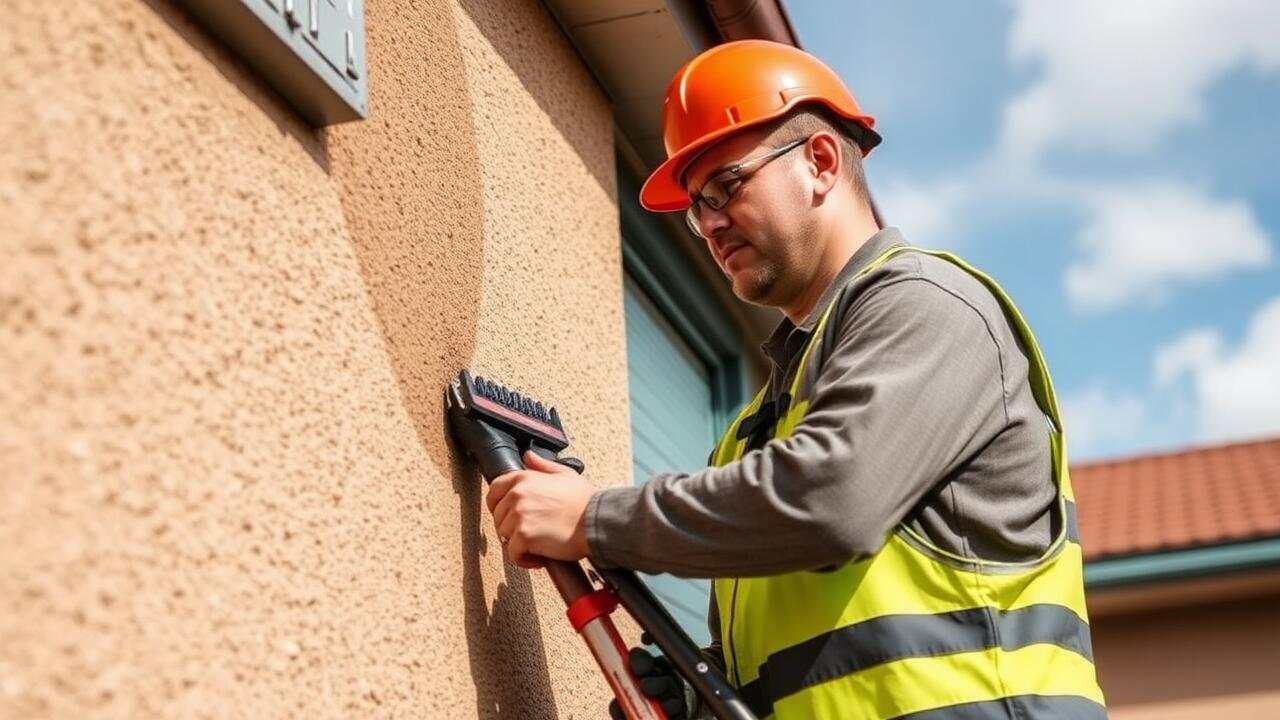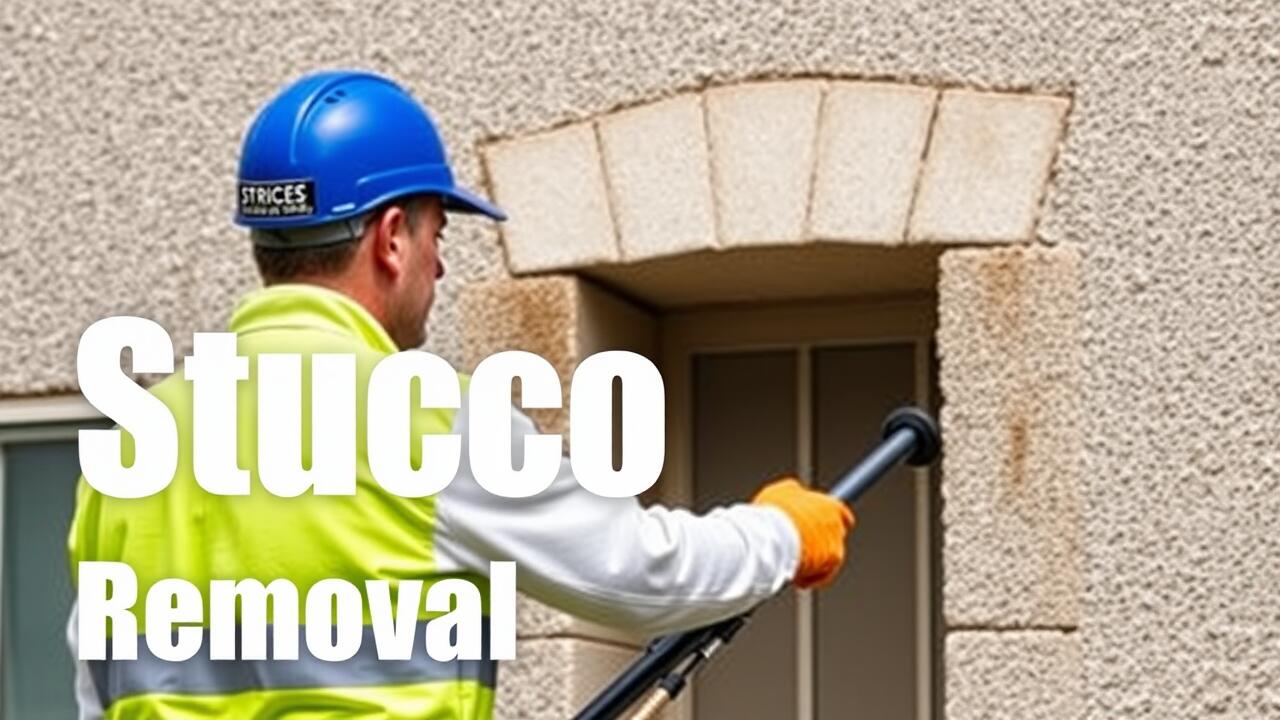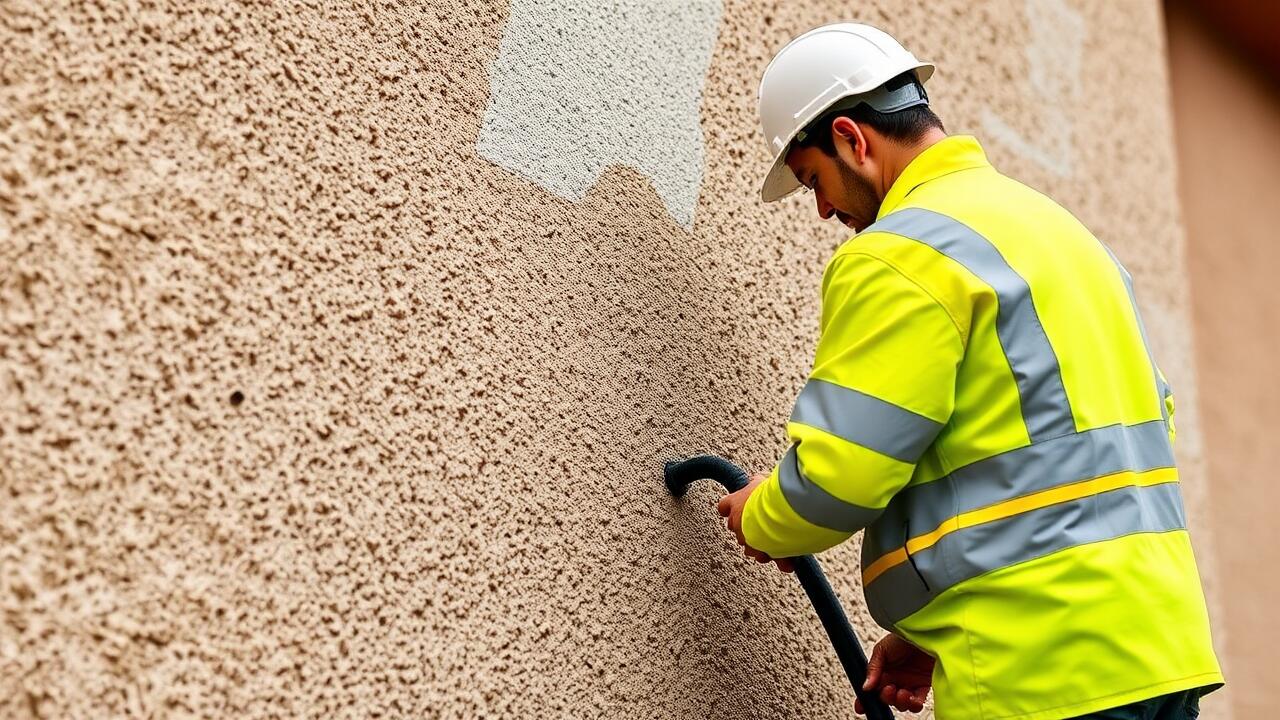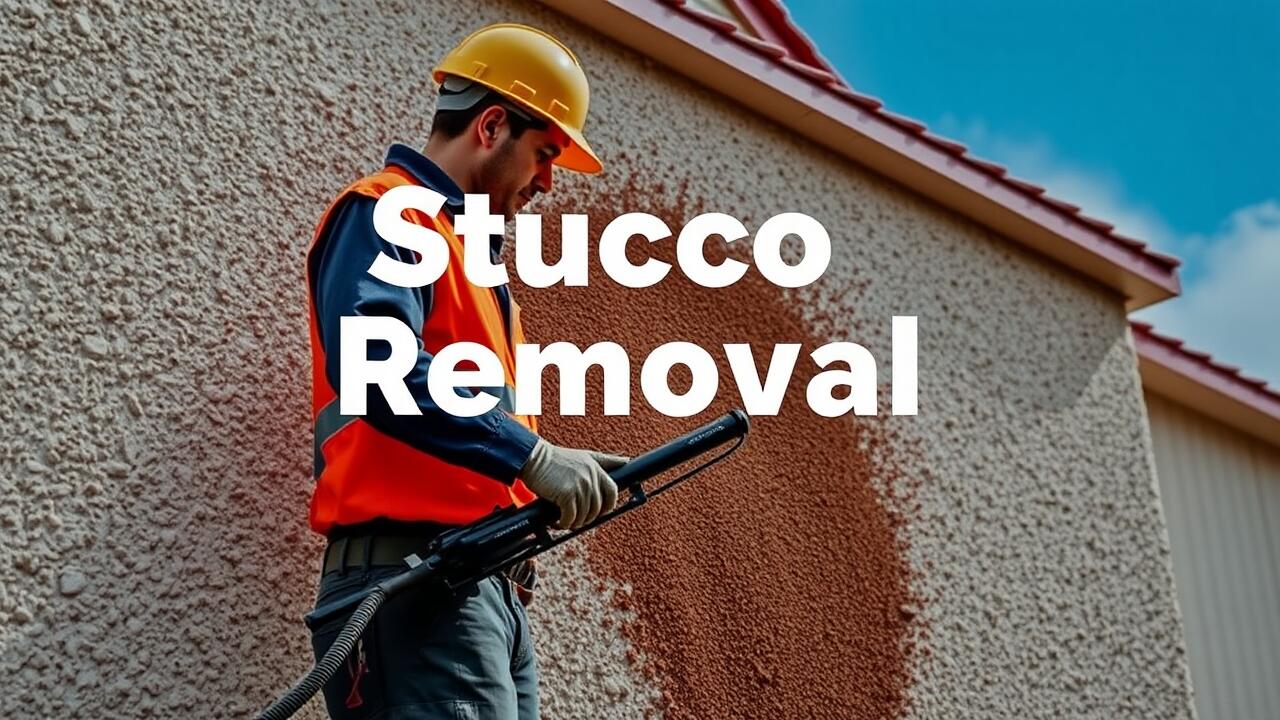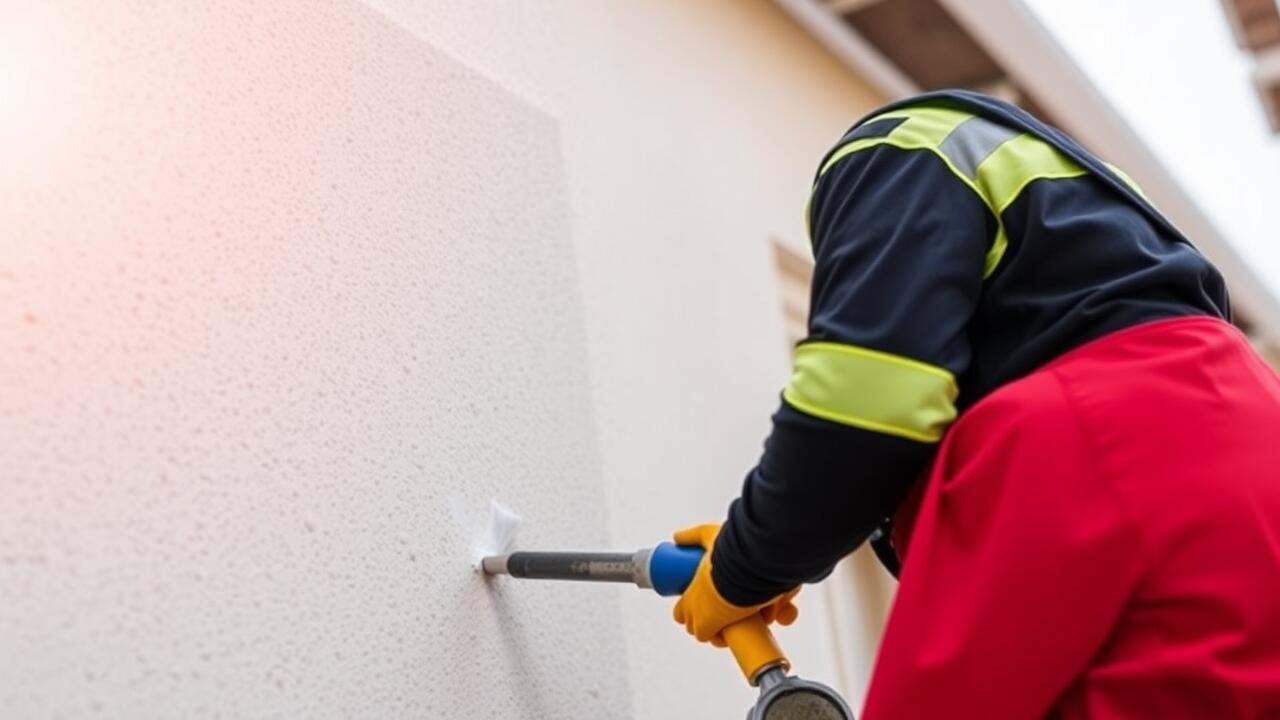
Safety Considerations for Manual Techniques
When undertaking manual stucco removal, safety should always be a top priority. The physical nature of this work can pose various risks, including cuts, lacerations, and back injuries. Workers should ensure they have the proper protective gear such as gloves, goggles, and masks to shield against dust and debris. Additionally, having a first-aid kit on hand is essential for addressing minor injuries that may occur during the process. Choosing the right time and conditions for Stucco Removal in Downtown Los Angeles, Los Angeles, can also minimize hazards, such as working in dry weather to reduce dust exposure.
Proper techniques can further enhance safety during manual stucco removal projects. Using the right tools, such as chisels and hammers, requires training to prevent accidents. Maintaining a stable posture while working helps reduce strain on the body and prevents slips and falls. It's important to indicate areas where people should avoid walking and to have adequate lighting to improve visibility. By focusing on these safety considerations, workers can effectively navigate the risks associated with manual stucco removal in high-traffic areas like Downtown Los Angeles.
Protective Gear and Best Practices
When engaging in stucco removal in Encino, Los Angeles, the importance of protective gear cannot be overstated. Safety goggles are essential to shield the eyes from flying debris. Heavy-duty gloves protect the hands from sharp edges and rough surfaces. A dust mask or respirator is crucial to prevent inhalation of harmful particles. Wearing sturdy work boots minimizes the risk of foot injuries while ensuring proper footing on uneven surfaces.
Best practices during manual stucco removal include maintaining a clean workspace to reduce tripping hazards. It’s advisable to have a first aid kit on hand in case of minor injuries. Utilizing scaffolding or ladders safely is vital for reaching higher areas without compromising stability. Regular breaks help prevent fatigue, allowing workers to remain alert and focused throughout the process. Adhering to these guidelines promotes safety and efficiency in removing stucco effectively.
Safety Considerations for Power Techniques
When utilizing power techniques for stucco removal, ensuring safety is paramount. The tools involved, such as power chisels or pneumatic hammers, can pose serious risks if not handled correctly. Operators should familiarize themselves with the equipment’s manual and receive appropriate training to mitigate the potential for accidents. In areas like Mid-Wilshire, Los Angeles, where older buildings may contain hazardous materials like lead paint, extra caution is necessary to protect both workers and the surrounding environment.
Proper maintenance of tools also plays a significant role in safety during stucco removal processes. Regular inspections can prevent malfunctions that might lead to injury. Furthermore, it is vital to maintain cleanliness around the worksite to avoid slip hazards. Allowing for a safe work environment not only protects workers but also contributes to the overall efficiency of the stucco removal project in Mid-Wilshire, Los Angeles.
Avoiding Injury and Managing Equipment
When engaging in stucco removal, especially in a busy area like Encino, Los Angeles, rigorous attention to safety is paramount. Proper training and familiarization with the power tools being used can significantly reduce the risk of accidents. Operators should ensure that all equipment is in good working condition, with blades and bits sharp and securely attached. Additionally, understanding the manufacturer's guidelines for tool operation will enhance safety and efficiency, minimizing the chance of injury during the removal process.
Managing equipment effectively also involves creating a safe work environment. Clear pathways should be maintained to prevent trips and falls, particularly in outdoor settings where debris may accumulate. It's vital to store tools properly when not in use, promoting safety for everyone involved. Regular inspections of equipment, as well as adherence to safety standards, will not only safeguard workers but also contribute to a more efficient stucco removal process in Encino, Los Angeles.
Environmental Impact of Stucco Removal
The environmental impact of stucco removal extends beyond the immediate effects of the process itself. When homeowners or contractors engage in this work, the disposal of old stucco can lead to increased landfill waste. Many times, stucco material includes additives and substances that may not be safe for the environment. Properly managing this waste is critical, especially in areas like Encino, Los Angeles, where residential construction and renovations are prevalent.
Additionally, the methods chosen for stucco removal can contribute to environmental degradation. Manual techniques may produce less dust and debris than power methods but often require careful handling to minimize waste. On the other hand, power techniques can generate considerable dust and noise pollution, affecting local air quality and wildlife. Thus, builders and homeowners must consider the environmental consequences of their stucco removal choices and seek eco-friendly disposal methods that comply with local regulations, particularly in densely populated regions like Encino.
Waste Management and Disposal Methods
Effective waste management for stucco removal involves understanding local regulations and available disposal options. For those undertaking Stucco Removal in Mid-Wilshire, Los Angeles, adhering to local guidelines is crucial. Contractors and homeowners should check with local waste management authorities to determine the appropriate disposal methods for that specific area. This might include designated landfill sites or recycling facilities that accept construction debris, which can help divert waste from landfills.
Recycling is increasingly becoming a viable option for managing stucco waste. Many materials, such as old stucco, can be repurposed or processed for reuse. In Mid-Wilshire, some companies specialize in the recycling of construction materials. They ensure that as much waste as possible is diverted from landfills, promoting a sustainable approach to renovation projects. By considering these methods, individuals can minimize their environmental footprint while complying with community standards during stucco removal.
FAQS
What are the main differences between manual and power stucco removal techniques?
The main differences lie in the tools used and the speed of removal. Manual techniques typically involve hand tools like chisels and hammers, which require more physical effort and time. In contrast, power techniques utilize machines like pneumatic tools or grinders, allowing for faster and more efficient work but often requiring more safety precautions.
What safety gear is recommended for manual stucco removal?
Recommended safety gear includes gloves, safety goggles, a dust mask or respirator, and protective clothing. This gear helps protect against dust, debris, and potential injuries while working with hand tools.
How can I avoid injuries when using power tools for stucco removal?
To avoid injuries, always read the manufacturer’s instructions, wear appropriate safety gear, ensure that you have a firm grip on the equipment, maintain a clear workspace, and be mindful of your surroundings. Additionally, take breaks to prevent fatigue that could lead to accidents.
What should I consider regarding environmental impact when removing stucco?
Consider the waste generated during the removal process and how it will be disposed of. Proper waste management practices, such as recycling materials when possible and disposing of hazardous waste according to local regulations, can help minimize environmental impact.
Are there specific disposal methods for stucco waste?
Yes, disposal methods can include recycling if the stucco is not contaminated, taking it to a designated landfill that accepts construction debris, or checking with local waste management services for specific guidelines on hazardous materials, such as lead paint if applicable.
